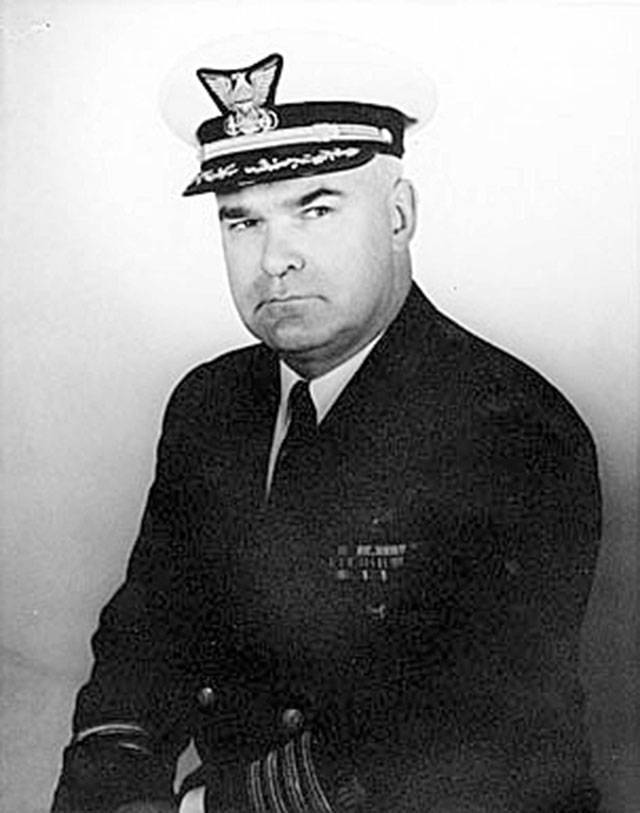YOU HAVE GONE out on a search-and-rescue mission. People need your help. After the mission ends, you are on your way back to your base of operations when disaster strikes, and you are stranded on a snow-covered mountain. Some on the team are hurt.
This all sounds like a movie. Like any good drama, one person rises to the occasion.
Following the end of World War II, the B-17 was phased out as a bomber, and the Army Air Forces retired most of its fleet. The majority were sold for scrap and melted down, although significant numbers remained in use as VIP transports, air-sea rescue and photo reconnaissance. Some B-17s were converted to carry lifeboats for air-sea rescue operations.
Transport service
The first part of this story involves the Military Air Transport Service (MATS) during the Korean War.
During the early morning of Jan. 19, 1952, a MATS Northwest Airlines DC-4 with 43 people — 40 military passengers and three crew — aboard was en route from Tokyo to McChord Field near Tacoma (now Joint Base Lewis-McChord) when it experienced engine trouble during a heavy snowstorm. The pilot diverted to Sand Spit, B.C., to make an emergency landing, but the aircraft couldn’t make it to the airport and belly-landed in the water.
The 4th Rescue Squadron stationed at McChord Field was called into action. An SB-17G, the search-and-rescue variant of the B-17 Flying Fortress, was dispatched to search for survivors of the Sand Spit crash. The aircraft numbered 44-85746A was lovingly known as Old 746. It had a crew of eight, including a pilot, co-pilot, navigator, flight engineer, two scanners and two radio operators.
Second life
The SB-17 was configured with an A-1 Higgins Lifeboat attached under the fuselage. The lifeboat could be dropped at an airspeed of 120 mph and an altitude of about 1,500 feet. As the aircraft passed directly over a target, the boat could be released and would freefall for a short distance before static lines attached to the aircraft pulled out three 48-foot parachutes to set the lifeboat in the water.
The crew conducted its search off Sand Spit and started back to McChord Field, but he weather made the flight difficult. The winds made turbulent conditions, and the snow was so heavy the crew couldn’t always see the tips of the plane’s wings, making it difficult to be sure of their exact location.
Olympic crash
Over the Olympic Mountains, they received clearance to descend from 8,000 feet to 6,000 feet, which was too soon. The left wing clipped trees on the top of 6,359-foot Tyler Peak, 12 miles south of Sequim.
The SB-17 hit the ground hard and broke into pieces. The pilot was thrown out a hole torn out of the cockpit. Miraculously, the pilot was pressed into the snow and part of the airplane slid over him. Then, the airplane slid down a steep slope about 2,000 feet.
The cockpit caught fire after the wreckage came to a stop. Crew were able to gather sleeping bags and other emergency equipment, and survivors tended to their wounds and scrounged up airplane debris and parachutes to construct shelters. The rescuers had become crash survivors. At that time, three crew members were missing.
At 10:30 the next morning, Lt. Cmdr. Gordon MacLane received orders to hunt for the crash site by helicopter.
MacLane wanted to narrow down his search area and decided to land in Sequim-area barnyards and ask if anyone had seen or heard anything unusual. Four farmers told him about a red glow in the sky and helped line up its position by sighting on fence posts.
Then MacLane received a radio message that the wreckage had been spotted near Tyler Peak. He immediately flew back to the Coast Guard Air Station and added a hospital corpsman, Wesley Mount, to his crew and headed for Tyler Peak.
The landing was tricky and hazardous for MacLane’s Sikorsky H-19C. He had to maneuver around trees, fight downdrafts and land in snow. Once on the ground, he directed some members of his crew to chop down trees to make the takeoff safer.
The first two survivors MacLane brought out were the pilot, Capt. Casimir Hybki, and flight engineer Sgt. Carl Scargall. MacLane flew them to Olympic Memorial Hospital, landing on the hospital’s front lawn.
On the flight back, MacLane spotted a pasture to use as a suitable landing zone. Leaving one of his crew there to control the site, MacLane radioed for an ambulance and a fuel truck to come to the field. He then returned to Tyler Peak and picked up two more injured men, co-pilot Capt. Kenneth Sentner and Sgt. Charles Hartke.
Before MacLane started the third mission, he spotted the fuel truck on U.S. Highway 101 near Sequim. Rather than delay the rescue, he landed on the highway and refueled there. Traffic backed up for a short time, but it was worth it.
Refueled, MacLane flew back to Tyler Peak and picked up the last survivor, Sgt. Edgar Farmer. On the advice of the medical personnel, MacLane flew the crash survivors to the hospital. To make room in the helicopter, MacLane’s crew was sent home in the ambulance.
MacLane was truly the hero of the day. During World War II, he was awarded the Navy/Marine Corps Medal for heroic actions.
A few days later, MacLane brought out the bodies of the three airmen killed in the crash, navigator Stanley Lankiewicz, Sgt. John DeRoth and flight engineer Alan Ball.
Fortunately, people were trained and ready to step up in times of disaster and meet the challenge.
________
John McNutt is a descendant of Clallam County pioneers and treasurer of the North Olympic History Center Board of Directors. He can be reached at woodrowsilly@gmail.com.
McNutt’s Clallam history column appears the first Sunday of every month.

